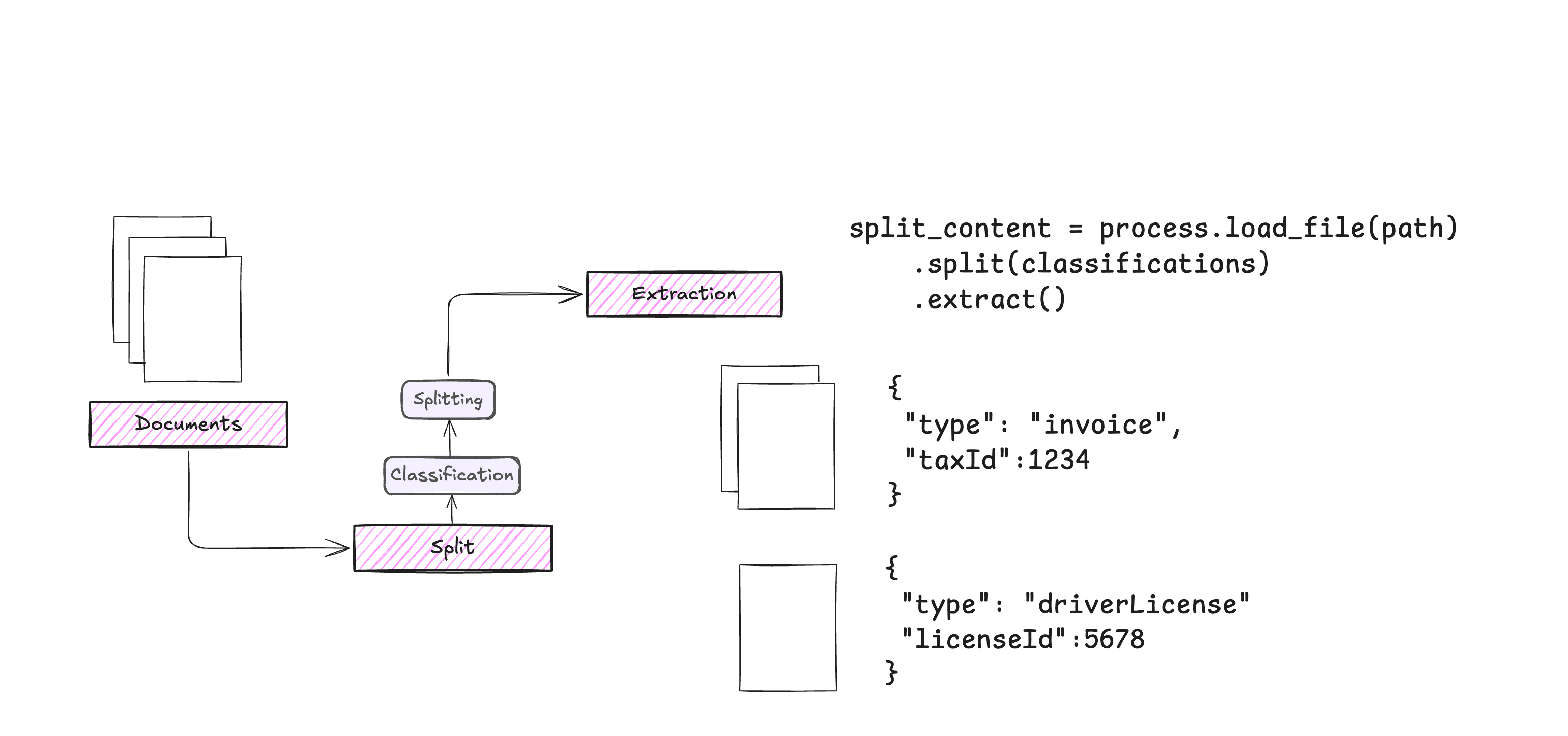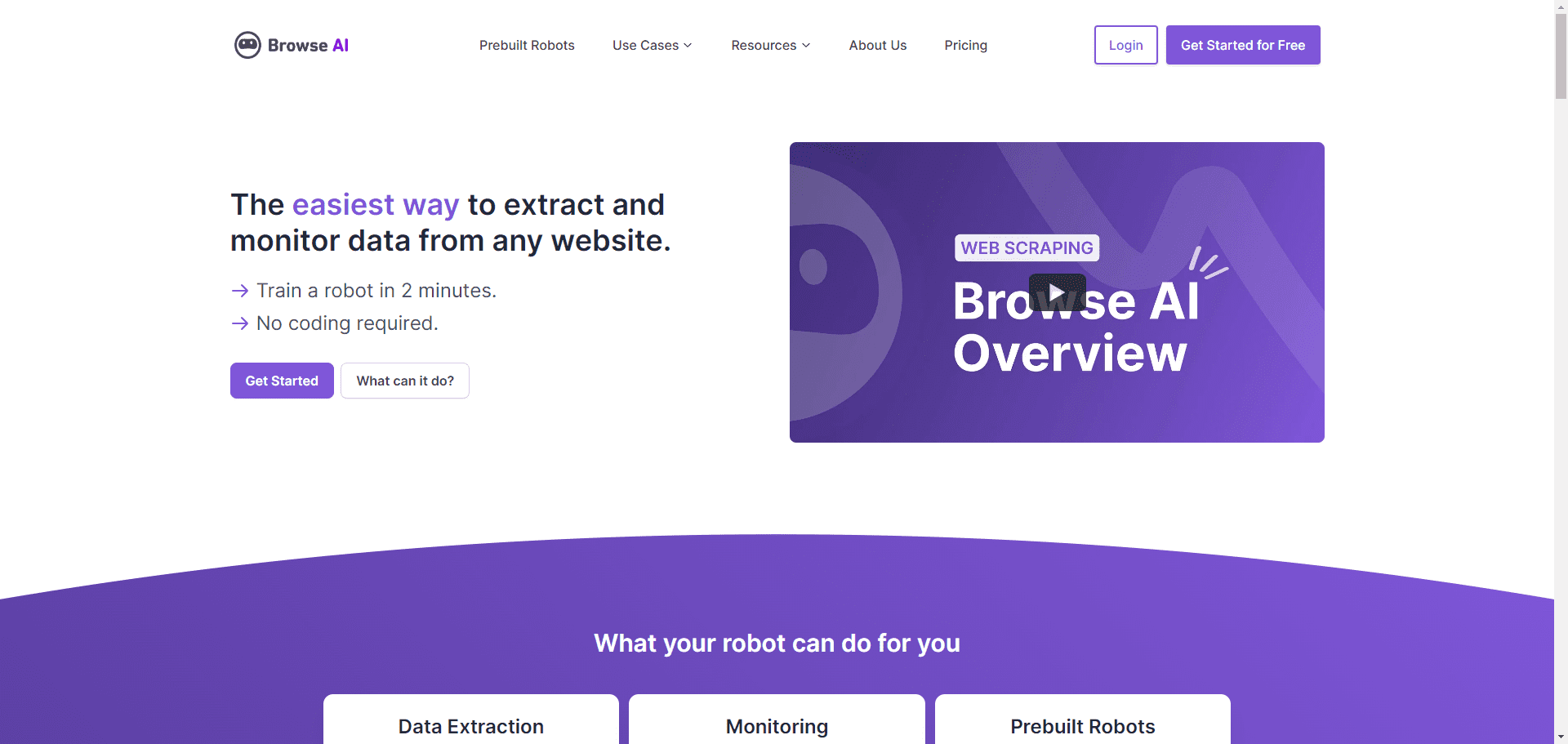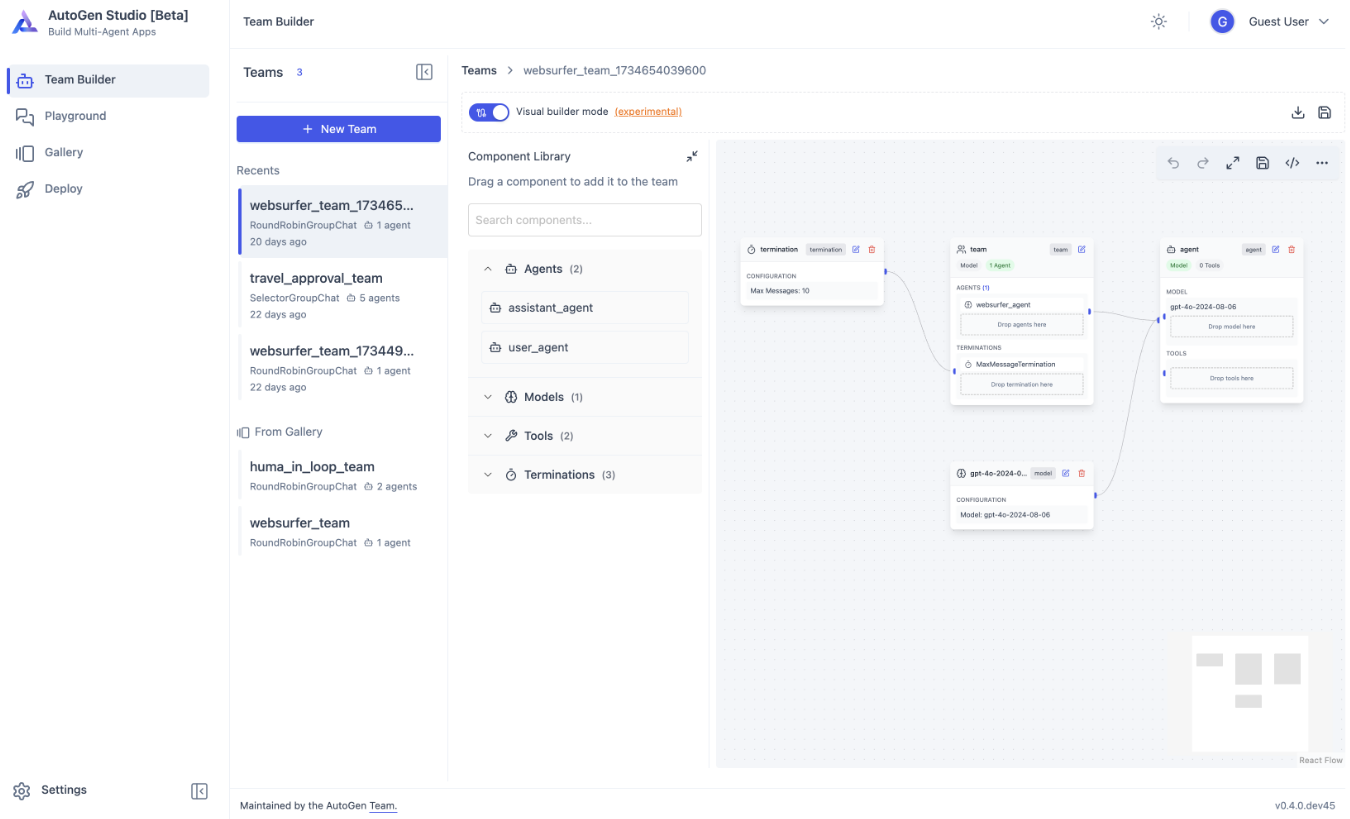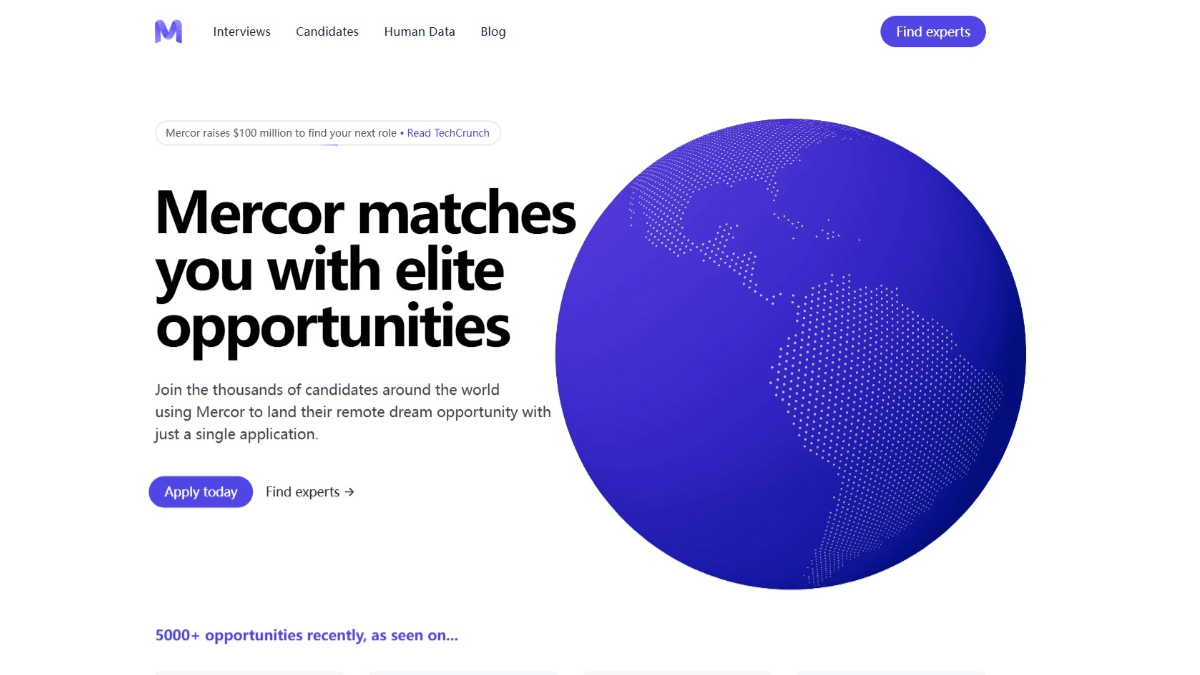Tarsier: an open source video comprehension model for generating high-quality video descriptions
General Introduction
Tarsier is a family of open-source video-language models developed by ByteDance, mainly for generating high-quality video descriptions. It consists of a simple structure: CLIP-ViT processes the video frames and analyzes the temporal relations in combination with a Large Language Model (LLM). The latest version, Tarsier2-7B (released in January 2025), reached the top level in 16 public benchmarks and can compete with models such as GPT-4o. Tarsier supports video description, Q&A, and zero-sample subtitle generation, and the code, model, and data are publicly available on GitHub. The project has also launched the DREAM-1K benchmark for evaluating video description capabilities, which contains 1000 diverse video clips.
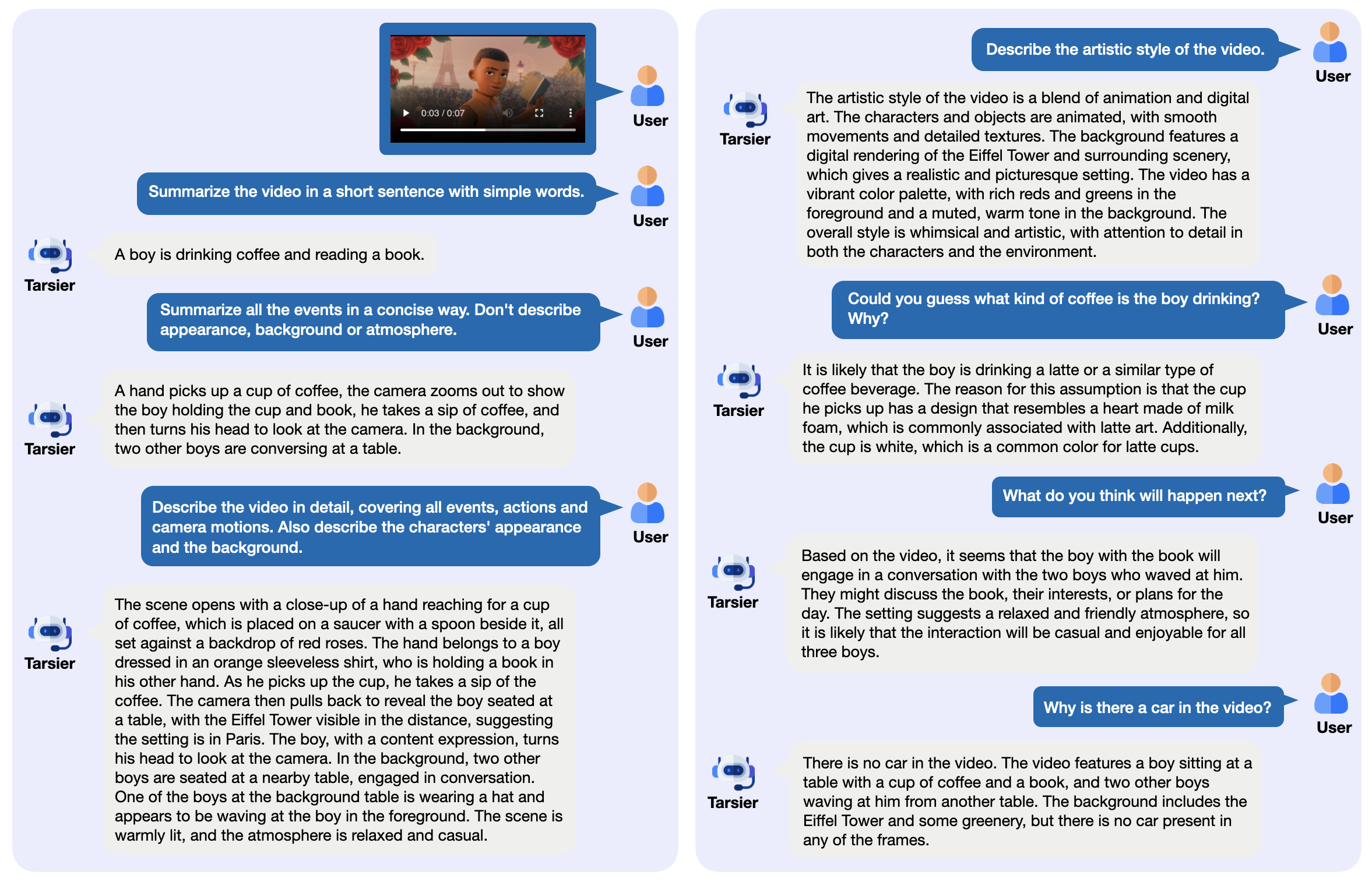
Function List
- Generate detailed video descriptions: analyze video content and output detailed text.
- Support for video Q&A: answer video-related questions, such as events or details.
- Zero-sample subtitle generation: generate subtitles for videos without training.
- Multi-task video comprehension: excels in multiple tasks such as quizzing and captioning.
- Open source deployment: provide model weights and code to run locally or in the cloud.
- Provides assessment tools: Includes the DREAM-1K dataset and the AutoDQ assessment methodology.
Using Help
Tarsier is suitable for users with a technical background, such as developers or researchers. Detailed installation and usage instructions are provided below.
Installation process
- Preparing the environment
Requires Python 3.9 or later. A virtual environment is recommended:
conda create -n tarsier python=3.9
conda activate tarsier
- clone warehouse
Download the Tarsier project code:
git clone https://github.com/bytedance/tarsier.git
cd tarsier
git checkout tarsier2
- Installation of dependencies
Run the installation script:
bash setup.sh
This will install all the necessary libraries, such as PyTorch and Hugging Face's tools.
- GPU support (optional)
If you have an NVIDIA GPU, install PyTorch with CUDA:
pip install torch torchvision --index-url https://download.pytorch.org/whl/cu118
- Download model
Download models from Hugging Face, e.g. Tarsier2-7B:
huggingface-cli download omni-research/Tarsier2-7b
Other models like Tarsier-34b or Tarsier2-Recap-7b are also available from the official links.
- Verify Installation
Run the quick test script:
python3 -m tasks.inference_quick_start --model_name_or_path path/to/Tarsier2-7b --input_path assets/videos/coffee.gif
The output should be a description of the video, such as "A man picks up a coffee cup with heart-shaped foam and takes a sip".
Main Functions
Generate Video Description
- move
- Prepare a video file (supports formats such as MP4, GIF, etc.).
- Run command:
python3 -m tasks.inference_quick_start --model_name_or_path path/to/Tarsier2-7b --instruction "Describe the video in detail." --input_path your/video.mp4
- The output is displayed in the terminal, e.g. describing the actions and scenes in the video.
- take note of
- Videos that are too long may require more memory, so it is recommended to test with a short video first.
- Adjustable parameters such as frame rate (see
configs/tarser2_default_config.yaml).
Video Q&A
- move
- Specify questions and videos:
python3 -m tasks.inference_quick_start --model_name_or_path path/to/Tarsier2-7b --instruction "视频里的人在做什么?" --input_path your/video.mp4
- Output direct answers, such as "He's drinking coffee".
- draw attention to sth.
- Questions should be specific and avoid ambiguity.
- Support Chinese and other languages, Chinese works best.
Zero sample subtitle generation
- move
- Modify the configuration file to enable subtitle mode (
configs/tarser2_default_config.yamlset up intask: caption). - Running:
python3 -m tasks.inference_quick_start --model_name_or_path path/to/Tarsier2-7b --config configs/tarser2_default_config.yaml --input_path your/video.mp4
- Outputs short subtitles, such as "Drinking coffee alone".
Local service deployment
- move
- Install vLLM (recommended version 0.6.6):
pip install vllm==0.6.6
- Start the service:
python -m vllm.entrypoints.openai.api_server --model path/to/Tarsier2-7b
- Called with the API:
curl http://localhost:8000/v1/completions -H "Content-Type: application/json" -d '{"prompt": "描述这个视频", "video_path": "your/video.mp4"}'
- vantage
- Video can be processed in batches.
- Easy integration into other systems.
Featured Function Operation
DREAM-1K Assessment
- move
- Download the DREAM-1K dataset:
wget https://tarsier-vlm.github.io/DREAM-1K.zip
unzip DREAM-1K.zip
- Operational assessment:
bash scripts/run_inference_benchmark.sh path/to/Tarsier2-7b output_dir dream
- The output includes metrics such as F1 scores that show the quality of the description.
AutoDQ Evaluation
- move
- Ensure installation ChatGPT dependencies (Azure OpenAI configuration required).
- Run the evaluation script:
python evaluation/metrics/evaluate_dream_gpt.py --pred_dir output_dir/dream_predictions
- Outputs an automatic evaluation score that measures description accuracy.
Frequently Asked Questions
- installation failure: Check the Python version and network, upgrade pip (
pip install -U pip). - Slow model loading: Make sure you have enough disk space, at least 50GB is recommended.
- No GPU output: Run
nvidia-smiCheck that CUDA is working properly.
Online Experience
- interviews Tarsier2-7B Online DemoIf you want to test the description and the Q&A function, upload a video.
With these steps, you can easily handle video tasks with Tarsier. Whether you're generating descriptions or deploying services, it's simple and efficient.
application scenario
- Video Content Organization
Media workers can use Tarsier to generate video summaries and quickly organize their material. - Educational Video Assistance
Teachers can generate subtitles or quizzes for course videos to enhance teaching and learning. - Short video analysis
Marketers can analyze the content of short videos such as TikTok and extract key messages for promotion.
QA
- What video formats are supported?
Supports MP4, GIF, AVI, etc, as long as FFmpeg can decode it. - What are the hardware requirements?
Minimum 16GB of RAM and 4GB of video memory, NVIDIA GPU recommended (e.g. 3090). - Is it commercially available?
Yes, Tarsier uses the Apache 2.0 license, which allows commercial use subject to terms.
© Copyright notes
Article copyright AI Sharing Circle All, please do not reproduce without permission.
Related posts

No comments...

